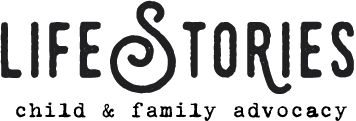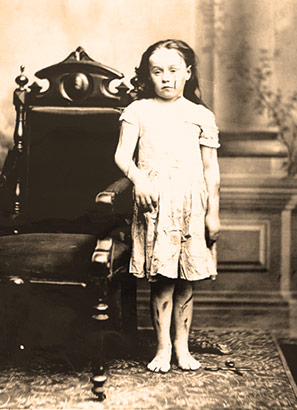Mary Ellen’s case took place in 1874. Her spirit remains with us because her case is generally regarded as the beginning of public concern for the plight of abused and neglected children.
Mary Ellen was a child whose father was dead and whose mother could not care for her because she was destitute and had to work full time. The New York Commission of Charities and Correction placed Mary Ellen with Mary McCormack Connolly and her husband, who were to care for her and report each year on her progress.
Instead, Mrs. Connolly abused her. She beat Mary Ellen, locked her in a room, rarely allowed her outside and did not provide adequate food or clothing.
Upset by the child’s screaming, a neighbor told a mission worker about Mary Ellen. The mission worker could find no one to intervene; the police had no grounds because no crime was being committed, and the agencies wouldn’t get involved because they did not have legal custody.
The mission worker finally appealed to Henry Bergh, the founder and president of the ASPCA, the American Society for the Prevention of Cruelty to Animals. He took up her cause and was able to persuade a judge to hear her case.
Mary Ellen was carried into the courtroom wrapped in a horse blanket. This is what the newspaper reported that she told the judge:
My father and mother are dead. I don’t know how old I am. I call Mrs. Connolly mama. I have never had but one pair of shoes, but I cannot recollect when that was. My bed at night has been only a piece of carpet stretched on the floor underneath a window. Mama has been in the habit of whipping and beating me almost every day. She used to whip me with a twisted whip—a raw hide. [Mama] struck me with the scissors and cut me . . . I have no recollection of ever having been kissed by anyone—have never been kissed by Mama. Whenever Mama went out I was locked up in the bedroom. I do not want to go back to live with Mama because she beats me so.
Mary Ellen was removed from the people who had mistreated her. Her case stirred public attention, and complaints began to pour in to Henry Bergh. So many cases of child beating and cruelty to children came to light that citizens called a community meeting and formed an association “for the defense of outraged childhood.” That association gave rise to the Society for the Prevention of Cruelty to Children, which was formally incorporated the year after Mary Ellen’s situation came to light.
Child-focused policies are relatively new:
- 1899: First juvenile court (Chicago) placed dependent and delinquent children in homes for wayward youth or reform schools.
- 1910: X-ray technology was developed, eventually allowing doctors to detect subdural (under the skin) injuries and untreated fractures.
- 1938: First legal rights of children: Fair Labor Standards Act imposed restrictions on working hours and conditions.
- 1962: C. Henry Kempe created the diagnosis for battered child syndrome.
- 1965: Mandatory reporting laws were in place in all states.
Beginning in the 1970s, the United States Congress became aware (along with the rest of the nation) that the child welfare system was not adequately protecting children. From a historical perspective, it can be said that we are still relatively new to the concepts of protecting abused and neglected children and developing appropriate systems, methods and programs to cope with the problems these children face.


